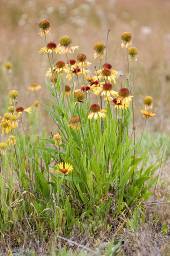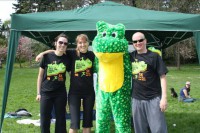Workshops address needs to help advance SPP goals
By Julie Vanneste, Sustainability Coordinator, Washington State Department of Corrections (DOC)
For two days last week Department of Corrections staff, consultants, representatives from fellow state agencies and the National Institute of Corrections met to work on the sustainability goals of the Washington DOC. From these meetings the Department is better equipped to implement sustainable purchasing policies and training for staff and offenders.
Washington DOC was one of three states to be awarded a Technical Assistance Grant by the National Institute of Corrections toward Greening Corrections. The award provided funds to recruit subject matter experts to convene for two days of workshops to address an area where the stated identified a need for assistance.
Washington was the first state to hold its workshops. We chose to focus on greening our procurement process and creating a sustainability curriculum to be delivered to both staff and offenders.
In our first meeting we quickly concluded we need to take ourselves back to foundations and write a sustainable procurement plan that will augment the broader sustainability plan. We left the workshop with some ideas for drafting a sustainable purchasing plan.
We were able to move on to some critical points of discussion including reframing our approach to sustainable purchasing. We re-confirmed the Department’s commitment to “Sustainable Purchasing” over “Green Purchasing.” We view sustainable purchasing as a more holistic approach to include regard for social and economic well-being as well as environmental concerns. Pursuing a sustainable purchasing program is the more challenging option, but this path will satisfy the Department’s economic and social responsibilities as well. To achieve this we have begun to produce a new sustainable purchasing policy and companion purchasing guide to nest in our broader Sustainability Plan and began work to identify and prioritize opportunities to apply this strategy.
In the second workshop we were joined by both the Deputy Secretary and Chief of Maintenance of Maryland’s Department of Public Safety & Correctional Services. Maryland, too, expressed a need for a sustainability training tool – a means or curriculum to introduce, educate and market sustainability to both staff and offenders.
With the help of our Maryland colleagues, our partners in the Sustainability in Prisons Project from The Evergreen State College, and staff from the U.S. Department of Energy, we developed a draft curriculum that will further strengthen the culture of environmental, economic and social responsibility already present at our facilities. This curriculum, “Living Sustainably in a Correctional Environment: Why we do it”, was designed to be flexible and adaptable between audiences and facilities across the nation.
All credit for the successful outcomes of these two workshops are due to the support received by NIC, the consultants from FHI360 and the facilitators, technical experts and fellow stakeholders who came to the table to help us forward our sustainability goals. The collaboration around the table was invaluable.
















